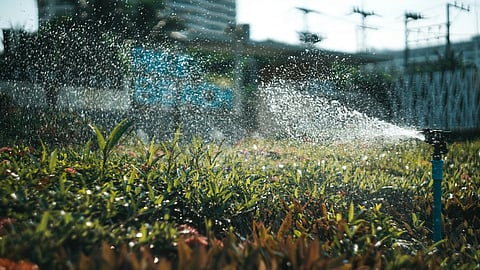How to Implement Smart Irrigation Techniques for Commercial Landscaping
Make every drop count with innovative irrigation techniques. No matter the size of your business, every garden needs to be addressed to save on water bills. Commercial landscaping can be acceptable in this day and age, with innovative technology available to do the hard work for you.
Why Are Smart Irrigation Techniques Necessary?
Have you noticed how the UK's climate is ever-changing? With hotter and drier summers, we must take extra steps to maintain our landscapes and reduce water wastage.
You must invest in a sound irrigation system to keep the business's plants hydrated and flourishing. Upgrading to a smart system is beneficial to avoid high water bills, inefficient watering and negative environmental impacts.
Understanding Smart Irrigation Techniques
Don't worry; you don't have to monitor the weather to water the greenery effectively. Take advantage of the technology available to save yourself the extra work.
Even better, you'll avoid overwatering your plants by giving them only what they need.
Let me explain what smart irrigation is: it's an irrigation system that you can control remotely and monitor the weather, moisture in the soil and often even the humidity to water the plants effectively. Thanks to this technology, your business will save on water costs and even reduce electricity bills, as the system will only activate when needed.
Even though initial costs and maintenance are involved, it has become an increasingly popular method for water conservation in the UK. Along with the increasing awareness of water scarcity, the value of the smart irrigation market is predicted to reach 7 Billion by 2032.
Types Of Smart Irrigation Systems
Climate-based controllers
They are also known as evapotranspiration (ET) controllers that adjust the irrigation schedule based on the weather. It can measure the rainfall, temperature and solar radiation.
Soil-moisture-based controllers
A sensor is placed below ground level to monitor the moisture around the roots of grass and plants. Once the measurement reaches the user's chosen threshold, it'll trigger the irrigation system.
Other Smart Irrigation Techniques
The good news is there is another technique you can implement that won't cost you any money. To ensure plants get the right amount of water, strategically plan the flora's placement on the property. Plants that require equal amounts of water should be planted together.
For instance, you won't be planting lavender and rosebush together. Here's why: The lavender might get overwater, or the rosebush underwatered. This overcomplicated the irrigation process.
Investing In A Sustainable Future
You're probably thinking the initial investment costs of these systems can be intimidating. However, no matter the size of your business, everyone needs to play their part in water conservation in the UK.
Ensure that your business is a part of the solution, not the problem. Using technology to incorporate eco-friendly landscape upkeep, the system will pay for itself over time with the water it saves.
Did you know that water has become such a valuable resource that it has become an investment? Go ahead and explore the potential of investing in water.
Planning and Implementing Smart Irrigation
You can agree that leaving the installation to a professional is probably best. Nevertheless, to give you an idea, keep reading to learn what the process will entail.
Assess the landscape
First things first, not all landscapes are the same. You'll need to assess the soil conditions and educate yourself on the fauna and flora in the area to make informed decisions.
Decide between a climate-based and weather-based sensor.
This decision needs to be made based on the climate and soil conditions.
Divide the landscape into zones.
These zones can be determined by the amount of sun exposure certain areas get, the type of plants and soil conditions.
Plan and layout irrigation lines
This part can be tricky. Careful planning is crucial to avoid overwatering. Strategically place the sensor and sprinkler heads where they are needed.
Set the sensors
A professional can adjust smart irrigation systems according to the landscape. Doing it correctly is vital to ensure optimal functionality and compliance with local regulations, which is why it's highly advisable to hire an expert.
Conclusion
In short, making more sustainable decisions is in the environment and your business' best interest. This has never been easier thanks to the technology we have available today. You can browse the Utility Bidder website and check out more options on saving costs within your business by changing your water supplier.
Inspired by what you read?
Get more stories like this—plus exclusive guides and resident recommendations—delivered to your inbox. Subscribe to our exclusive newsletter
Resident may include affiliate links or sponsored content in our features. These partnerships support our publication and allow us to continue sharing stories and recommendations with our readers.

